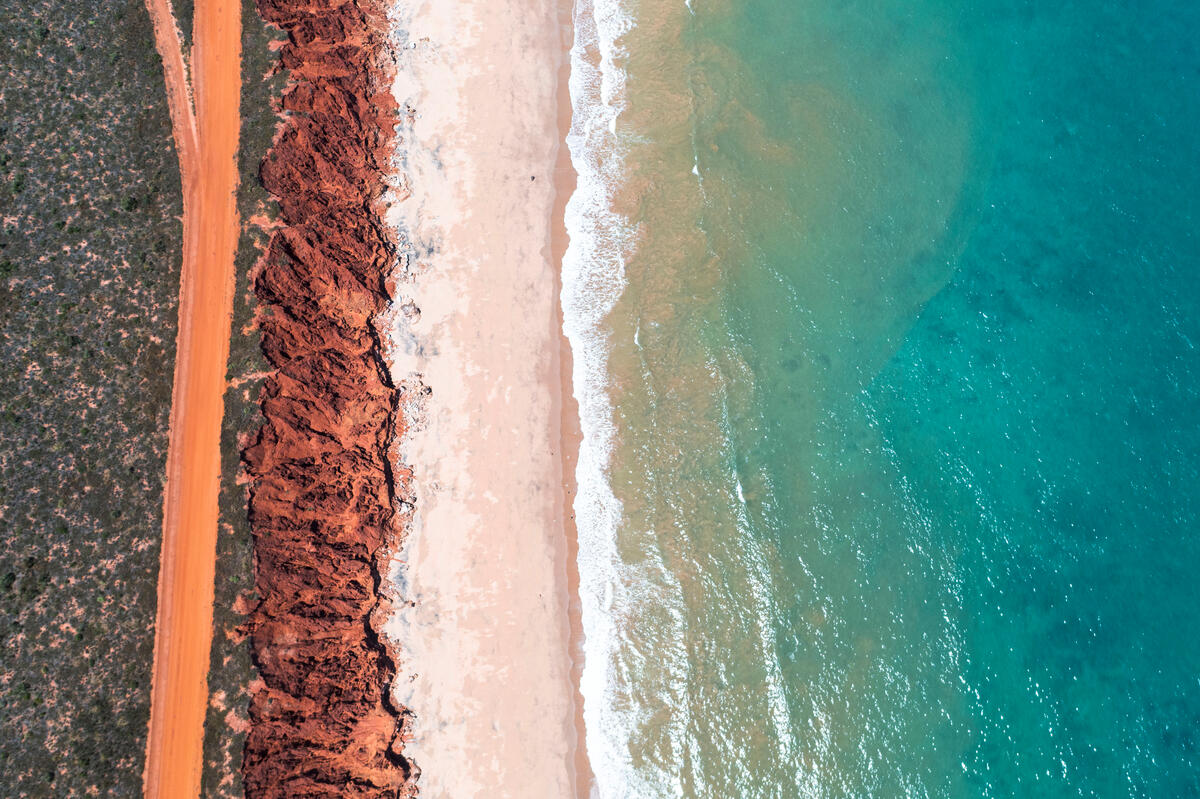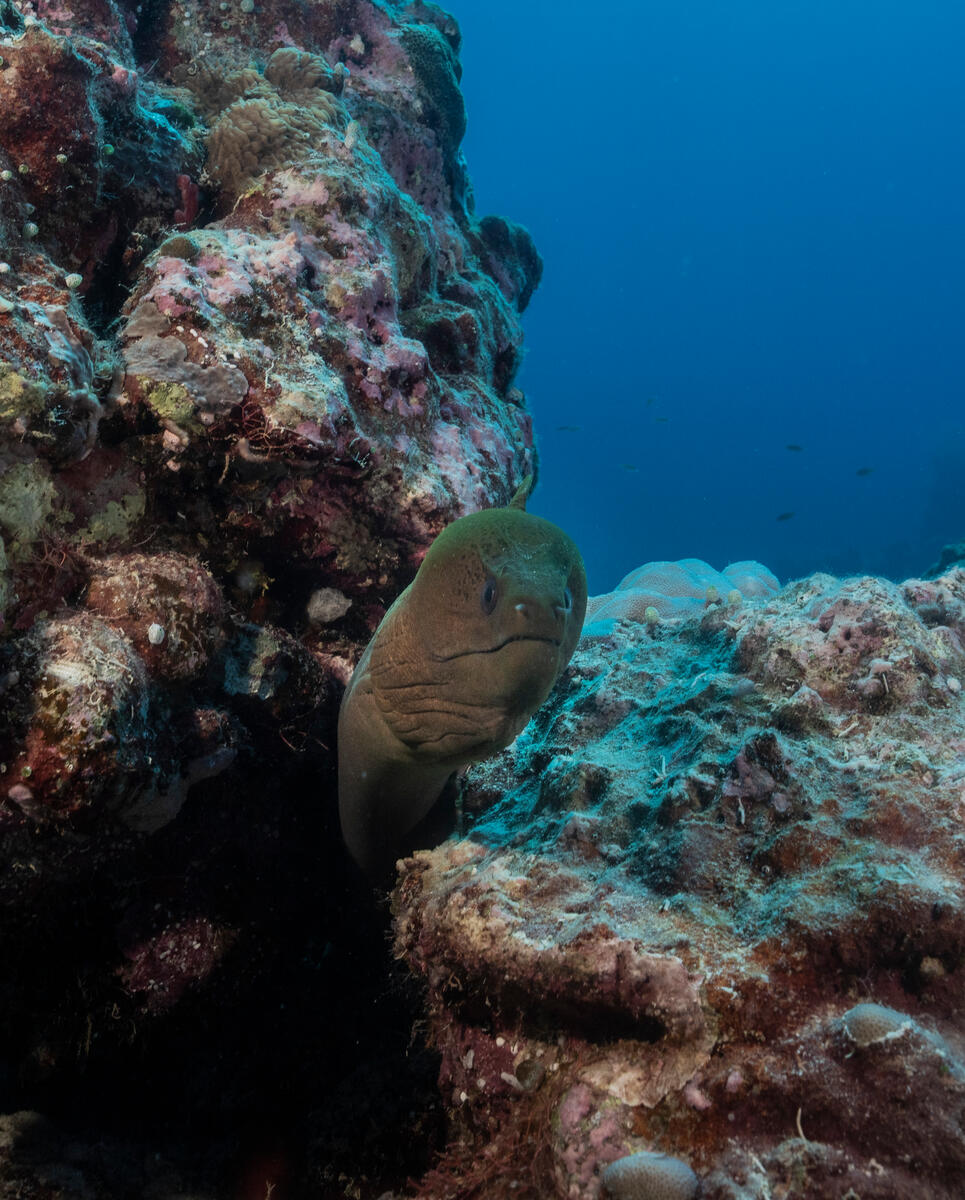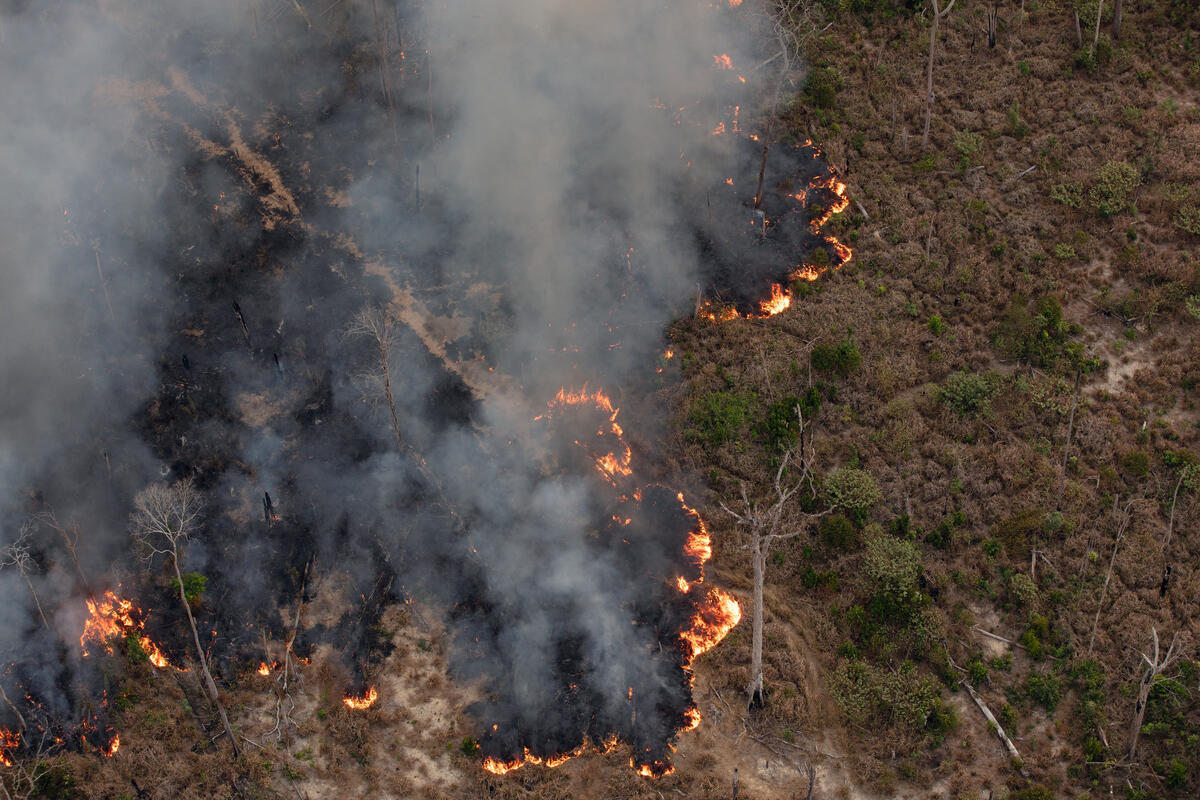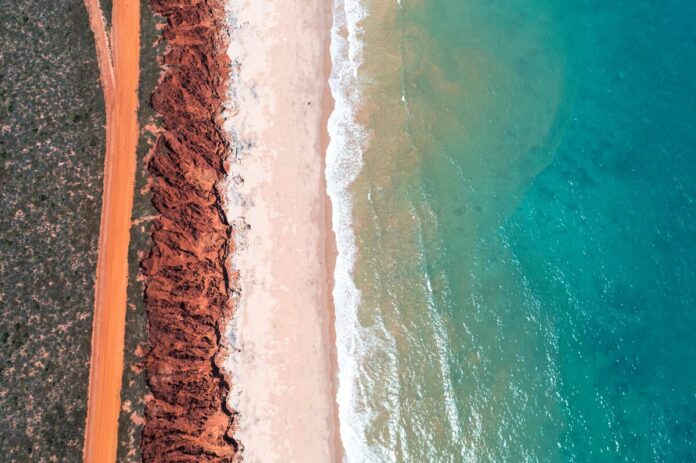
© Alex Westover / Greenpeace
Western Australia is sweating through another unusually hot summer this year1 with parts of the state almost reaching a blistering 50°C.2 The upward trending heat in the state is not just unusual—it is predicted to become life-threatening, pushing communities, ecosystems, and infrastructure to the brink.
For the Kimberley, this isn’t just another summer heatwave. This is a warning of what’s to come. A report from the Australia Institute shows that if fossil fuel pollution continues unchecked, the Kimberley could see over 300 days a year above 35°C by the end of the century. In Broome alone, the number of days over 40°C could increase tenfold, making the region almost uninhabitable for future generations.3
We know this is being driven by fossil fuel pollution. That is why the gas industry’s expansion plans in WA are so concerning. Not only are there plans to frack the Kimberley for gas4 but they also want to drill up to 50 wells at the pristine Scott Reef off the Kimberley coast. If these proposals go ahead they will not only cause direct impacts on the natural environment but will fuel further climate warming.
Why Extreme Heat is Unlivable
Prolonged exposure to extreme temperatures is not just uncomfortable—it is dangerous. The human body can only function properly within a narrow temperature range, and when exposed to sustained heat over 35°C, the risk of heat exhaustion and heat stroke skyrockets.2 Without adequate cooling, the body struggles to regulate its internal temperature, leading to organ failure, dehydration, and even death.
Extreme heat is particularly deadly for older adults, children, and people with pre-existing health conditions, who are more vulnerable to heat stress. Hospitals and emergency services already see increased demand during heatwaves, and as these events become more frequent and severe, medical systems will be stretched to their limits.
For many, escaping the heat is as simple as turning on an air-conditioner—but for vulnerable communities, it’s not that easy. People living in remote areas, those experiencing financial hardship, and First Nations people may not have the same access to cooling infrastructure. Many homes in the Kimberley were not designed for such extreme conditions, leaving people at heightened risk. When extreme heat is prolonged over weeks, staying indoors becomes increasingly difficult, and access to reliable, cool spaces can mean the difference between life and death.
For wildlife, these temperatures are equally devastating. Many native species in the Kimberley are adapted to warm climates, but sustained exposure to extreme heat pushes them beyond their limits. Birds, mammals, and reptiles can suffer heat stress, mass die-offs, and reproductive failures as water sources dry up and food becomes scarce.
It’s not just on land that heatwaves are a threat. The ocean off the North-West of WA is currently experiencing a marine heatwave that has been tied to mass fish deaths and coral bleaching.5 When we were out at Scott Reef recently (documenting the abundant marine life where Woodside want to drill for gas), the ocean was disturbingly warm and concerns are growing over the potential damage this latest marine heatwave may cause to aquatic species down the WA coast.
If that wasn’t enough to worry about, there are further fears that the high ocean temperatures will fuel dangerous cyclones. With the monsoon finally breaking across the north of Australia a tropical cyclone is currently in formation off the Broome coast. The predicted path suggests the cyclone is likely to plunge the Pilbara into a rapid shift from temperature extremes to rainfall extremes. A case of weather whiplash6 as climate change drives rapid flips of weather extremes.

A Climate Crisis Rooted in Injustice
The Kimberley is home to some of Australia’s most unique ecosystems and holds deep cultural significance. But now, it is being forced to endure conditions that are rapidly becoming more extreme.
With relentless heat comes severe drought, dried-up water sources, and increased fire risks—threatening both communities and fragile landscapes. Bushfires in extreme heat conditions spread faster, burn hotter, and are harder to contain, putting homes, wildlife, and ecosystems at serious risk.
Additionally, extreme heat and worsening wildfires are putting significant environmental and cultural heritage sites at risk. The increasing unpredictability of extreme weather is making it harder to protect these irreplaceable parts of Australia’s history.
Why Is This Happening?
The science is clear—this crisis is driven by the continued burning of fossil fuels. Greenhouse gas emissions from coal, oil, and gas are supercharging heatwaves, making them more frequent, more intense, and longer-lasting.
Australia is already one of the most heat-exposed countries in the world, but this summer is testing new limits. January 2025 has already set multiple records for prolonged extreme heat across Western Australia, with some regions enduring over a week of temperatures exceeding 45°C.
Instead of focusing on renewables, Australia’s biggest polluters—companies like Woodside, Santos, and Chevron—continue to expand fossil fuel projects, despite knowing the damage they cause. Woodside is proposing to drill up to 50 gas wells at the pristine Scott Reef off the Kimberley coast. Its Burrup Hub would put threatened species and significant reef systems at risk while adding 6.1 billion tonnes of carbon dioxide to the atmosphere.

Make Polluters Pay
The communities of the Kimberley should not be left to bear the cost of a crisis they did not create. It’s time to make polluters pay.
By holding fossil fuel corporations accountable for the damage they’ve caused, we can fund climate resilience, protect communities, and accelerate the transition to renewable energy. The time for action is now.
Sign the petition today and demand that polluters pay for the climate destruction they have caused.
Together, we can fight for a future where the Kimberley—and all of Australia—remains a safe and liveable place for generations to come.
4. https://australiainstitute.org.au/report/heatwatch-extreme-heat-in-the-kimberley/

